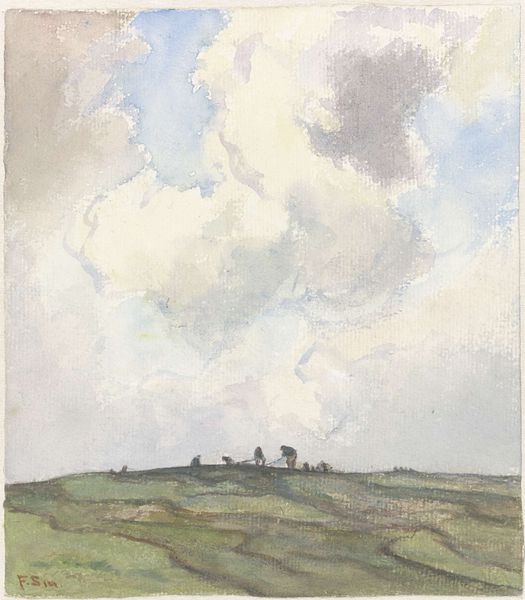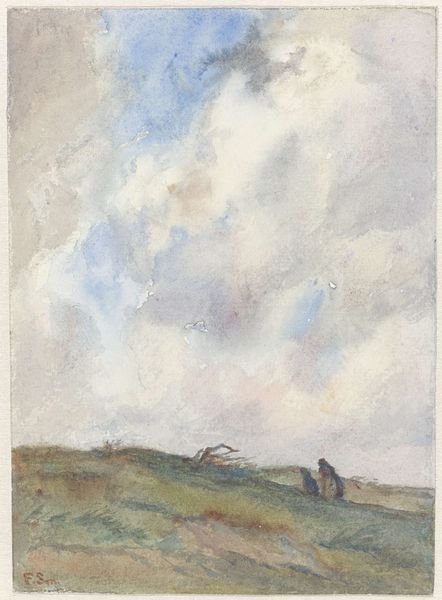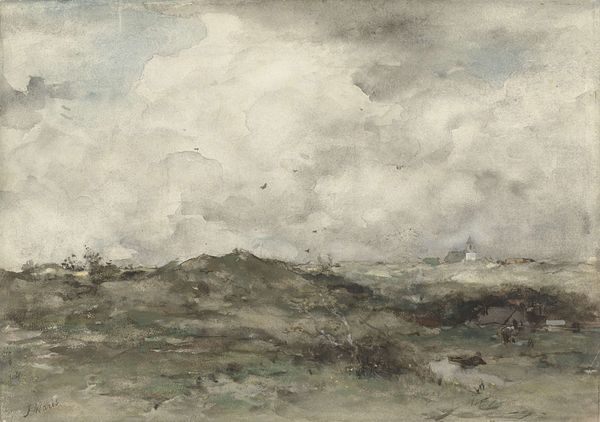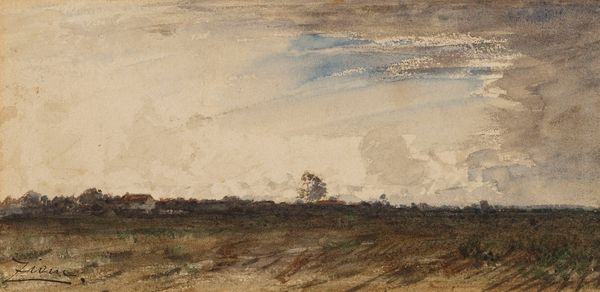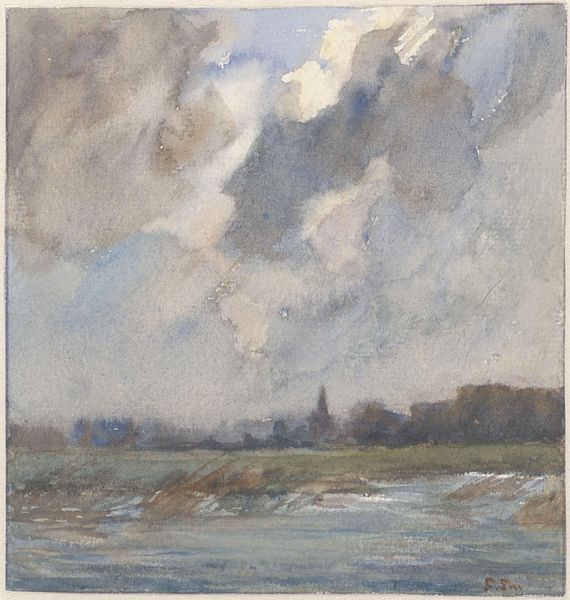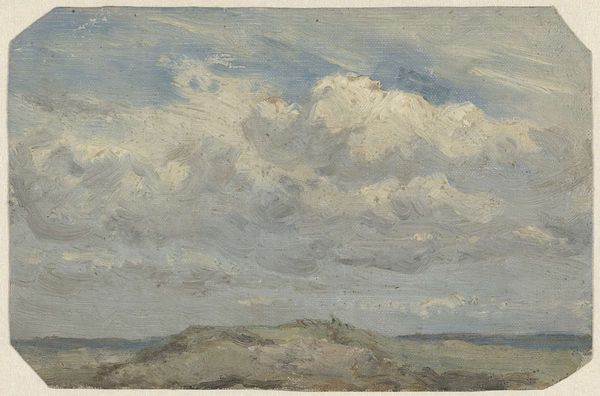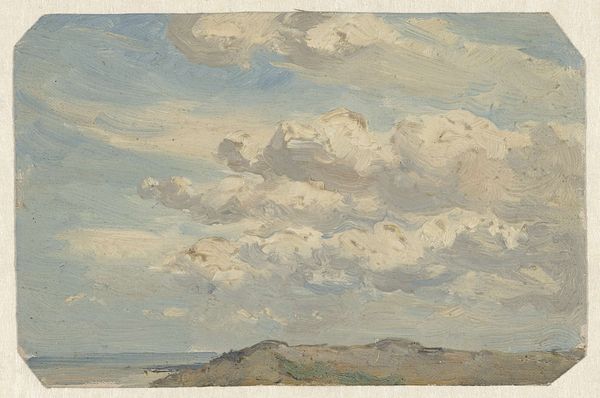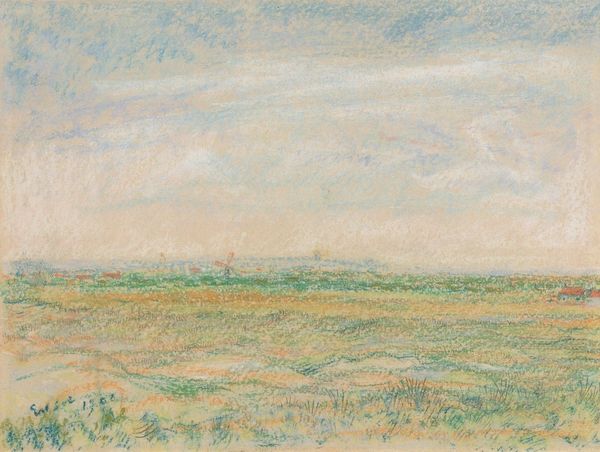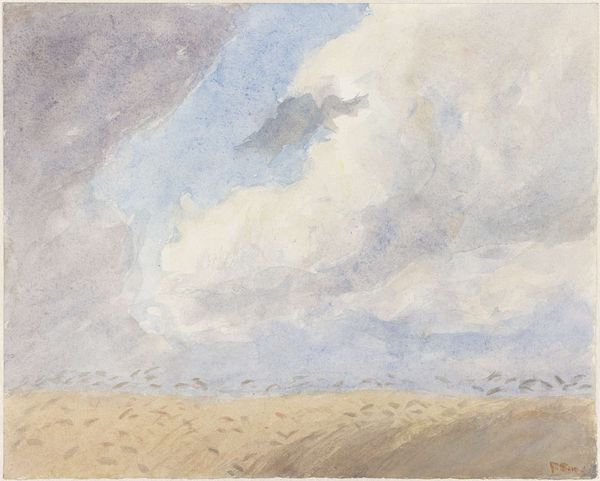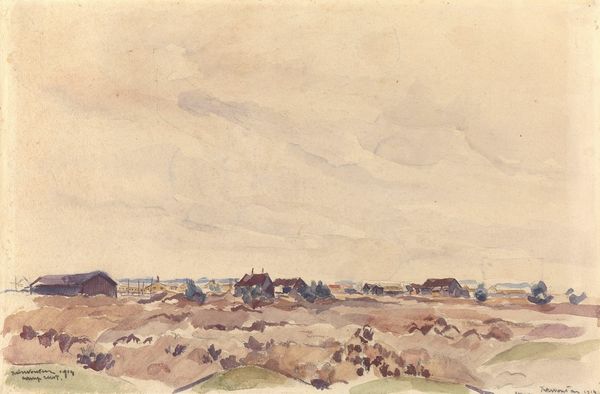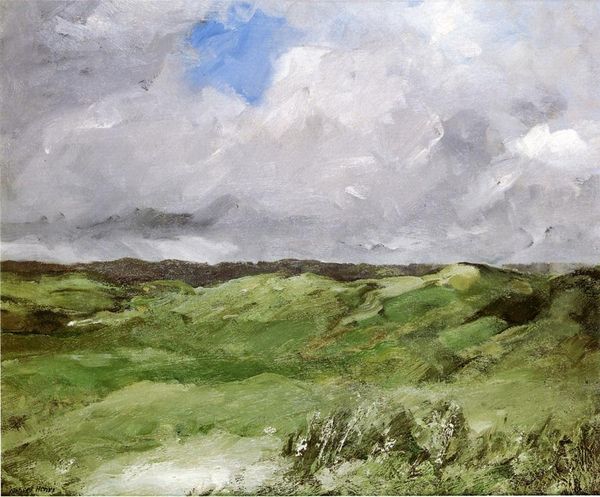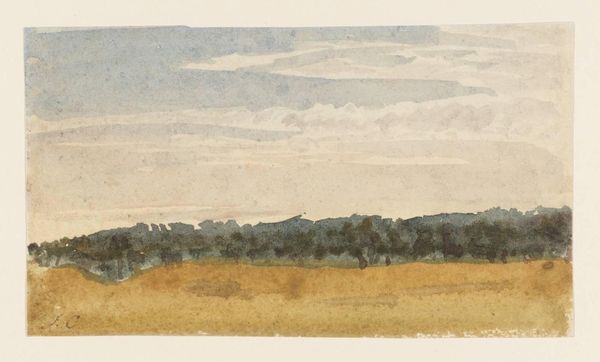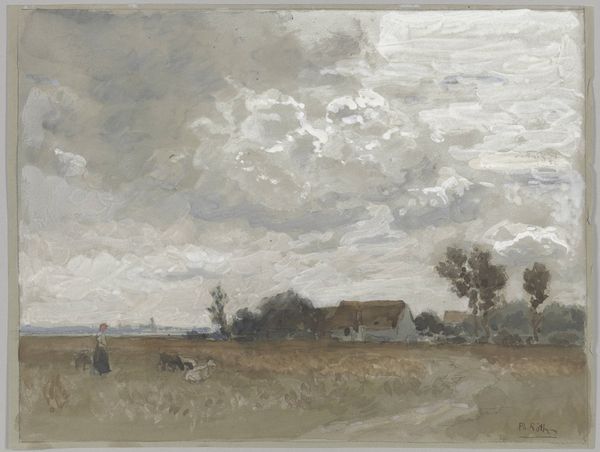
plein-air, watercolor
#
water colours
#
plein-air
#
landscape
#
watercolor
#
watercolor
#
realism
Dimensions: height 64 mm, width 120 mm
Copyright: Rijks Museum: Open Domain
Curator: This watercolor, entitled "Duinlandschap bij storm" was created by Frans Smissaert between 1872 and 1944, and is held here at the Rijksmuseum. Editor: My initial response is a feeling of both vastness and vulnerability. The wide expanse of sky dominates the composition, and the lone figure on the horizon line feels incredibly small. There's an undeniable tension, I think. Curator: Absolutely. It’s a potent distillation of Romantic ideals regarding nature. What is especially interesting here is that this artist painted it “en plein air,” as indicated by gallery archives, really capturing the direct atmospheric conditions as they unfold around him. He seems driven by capturing light effects and an immediacy of place. Editor: That really reinforces my reading. Painting outdoors in that landscape during a storm demands resilience. This isolated individual becomes an avatar for us all as it stands before nature's overpowering forces. Watercolors really amplify that sentiment—transparent, shifting like the sky itself. Curator: Yes, watercolor was certainly employed at that moment in art history to demonstrate new perceptions, with subjects such as landscape that previously may not have garnered as much respect beginning to express shifting public views on nature. Editor: I also read a lot into the symbols related to water here. On one hand water represents purification, cleansing—yet these storm clouds can very easily indicate chaos and potential destruction. Seeing the artist's vision this way really gives the subject profound spiritual weight! Curator: Certainly. We must also consider Dutch landscape painting’s deep roots. This wasn’t simply observational painting but an act of asserting Dutch territory. Such works were crucial in nation-building and civic pride; even seemingly humble watercolors were part of a broader visual culture shaping identity and reinforcing shared landscapes. Editor: It's really remarkable how even with such delicate application, we see this weight of history, collective memory channeled through landscape as powerful visual allegory. I had never thought to consider storm imagery and ideas of nationhood side by side like this! Curator: Well, it showcases art’s ongoing influence. From the personal response evoked by weather, to its ties to public ideologies surrounding the construction of nationality and environment. Editor: Indeed—it prompts introspection not just on one's internal world facing larger struggles but also collective views surrounding environmental engagement, both now and through history!
Comments
No comments
Be the first to comment and join the conversation on the ultimate creative platform.
